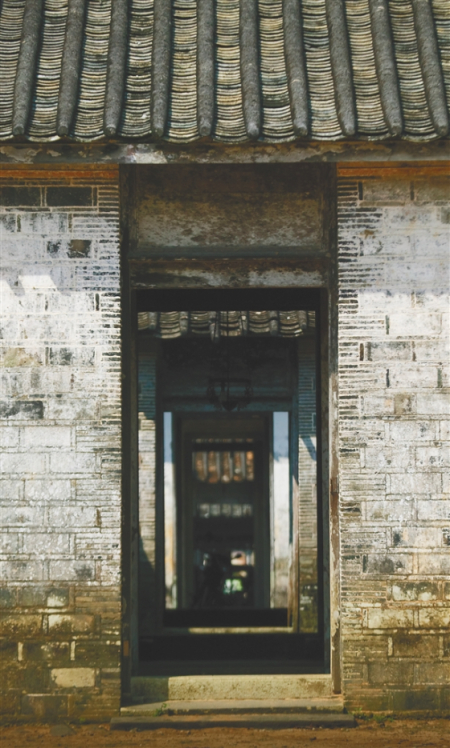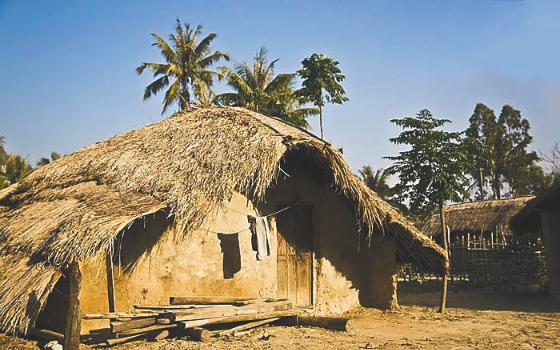/ 2025-06-20 12:56 / Culture
In the blazing heat of summer, the cool indoor air becomes incredibly addictive. Whether you are at home, in the office, or in a shopping mall, air conditioners and fans are always on full blast. But how did Hainan islanders keep their homes cool before these modern wonders were invented?
They had a lot of ingenious ways to build climate control homes in Hainan! Historic home architecture, including Qilou buildings, boat-shaped cottages, volcanic rock structures, oyster shell houses, and the traditional dwellings of northern Hainan... walk into any of these local residential buildings and you will immediately feel the difference. The quiet, cool indoor atmosphere is highly refreshing after being out in the heat of the day!
Over the long history of the island, locals have developed their own unique architectural styles influenced by the geography and culture of the area. These traditional dwellings are kept cool through carefully designed structural layouts, smart materials selection, and localized construction methods, showing the wisdom of Hainanese through the ages in adapting to high tropical island temperatures and humidity.

A traditional Wenchang home (File photo)
Shaded corridors and lanes create cooling breezes
Hainan Island is located in the northern reaches of the tropical South China Sea, and features year-round hot, humid climates ranging from tropical in the south to subtropical in the north. Protection from the heat of the sun and the drenching rain, as well as excellent ventilation and drainage are all important considerations for Hainan’s traditional homes. These features can all be clearly seen in the Qilou buildings located in commercial districts. Every building is fronted by a porch with pillars supporting the overhanging higher floors. The porches of each Qilou building connect to the next, creating a corridor providing shade, shelter from tropical downpours, and allowing excellent ventilation and cooling.
On Haikou’s historic Zhongshan and South Bo’ai Roads, Qilou buildings face each other down the length of the street, each comprised of a roof, main building structure, and ground floor. The moisture-proof upstairs area provides living quarters, while the ground floor is occupied by shops and other businesses. The corridors created by the overhanging buildings provide handy shelter from both wind and rain for pedestrians, so no matter the weather, there’s no need to fret.

Qilou corridors create visibility for storefronts while also offering a convenient escape from bright sun and summer heat. (Photo: Li Tianping / Hainan Daily)
Leaving the city and heading into the countryside, you’ll encounter traditional north Hainan villages where homes are arranged in orderly rows, creating cool lanes optimizing airflow. This greatly assists with ventilation and cooling inside the densely clustered homes of the village. A pond lies at the center of Luoyi Village in Laocheng Town, Chengmai County. Most of the village courtyards border the pond, and the village lanes all lead to the water as well. Breezes flow from the pond down the lanes, providing fresh, cool air to all residents.
Traditional courtyard homes in north Hainan are arranged so that the front and rear entrances of each courtyard line up along a central axis, forming a natural path for wind to take through the structure and significantly cooling the halls and rooms on both sides.
Locally sourced materials create ‘green’ buildings
The homes of Rongtang Village, located in Shishan Town, Xiuying District, Haikou, are built from volcanic stone cut to fit together perfectly. The village roads, also paved with volcanic stone dating back to the eruption of nearby volcanoes millennia ago, have stood the test of time with ease.
Looking closely, you’ll discover that each stone is highly porous, allowing air to flow freely through while simultaneously blocking the light. This unique property keeps the volcanic stone houses warm in winter and cool in summer.
Throughout history, the people of Hainan Island have found ways to adapt to local conditions, make excellent use of local materials, and create homes that harmonize with the land around them. Traditional dwellings such as volcanic rock houses, boat-shaped cottages, and oyster shell homes are the forerunners of the modern natural ‘green’ architecture movement.

A boat-shaped cottage (File photo)
In Baicha Village, Jiangbian Township, Dongfang, the boat-shaped cottages of the Li People have become quite the sensation. As the name suggests, these houses resemble upside-down fishing boats. The curved roofs easily shrug off strong winds and rain showers, and can even withstand typhoons. The homes are constructed mainly from locally sourced bamboo, wood, and straw thatch, which offer excellent ventilation and insulation, keeping the interior refreshingly cool even when the bright tropical sun is shining.
In the coastal village areas of Hainan, including Lingao, Dongfang, and Sanya, locals cover the exterior walls of their homes with oyster shells.
These oyster shell homes are an excellent way to cope with the humid, hot tropical conditions. The porous oyster shells provide a heat shield, keeping the hot sun out, while storing trace amounts of rainwater, cooling the homes through evaporation. The oyster shells also keep the interiors dry, preventing rainwater corrosion.
The cooling power of green and blue
In Laoshi Village, Haitou Town, Danzhou, over a hundred century-old tamarind trees stand along the banks of the Changhua River. They not only form a strong barrier protecting the village from the powerful, destructive winds of typhoons, but also join with the river in creating cool breezes that assist in ventilation and reduce the ‘heat island effect’ created by the buildings of the village.
Most of Hainan’s villages are located on the slopes of hills and near sources of water, benefiting from the shade and protection of lush tropical greenery. In the dry, hot climate of villages on Hainan’s west coast, such as in Dongfang, Danzhou, and Changjiang, locals have a long tradition of planting rows of trees both in front of and behind their homes, taking advantage of the cooling power of green vegetation and blue waters.
In Qionghai, Wenchang, Ding’an, and other north Hainan areas, traditional villages usually feature palm tree groves, fruit trees, or thickets of wild shrubs. Banyan, lychee, wampee, palm, and other trees grow in public squares, with dense greenery surrounding the village and well spaced greenery cultivated within, creating a refreshing, cool nature retreat.
In addition, many north Hainan villages are built along slopes facing the water. If they are located on flat land, the foundations are low in the front and high in the back. Fields or ponds front the villages, and mountain slopes rise behind them, allowing rainwater to sluice down from the heights into the fields and ponds, replenishing water as needed and creating water storage for fish farms or fire prevention.
People must breathe to live, and buildings are no different. These days, more attention is being paid to low carbon construction, energy conservation, and green ecology. Hainan has also proposed the creation of ‘cool cities’ to further reduce the ‘heat island effect’ by optimizing urban green and blue spaces and improving building layouts, making the cities of this tropical island province more livable, more beautiful, and much, much cooler.
Copyright © 2020 Hainan Free Trade Port
Qiong ICP 19005356
All Rights Reserved
Office of the Hainan Free Trade PortWorking Committee
No. 69 Guoxing Avenue, MeilanDistrict, Haikou City
Hainan Province.570203, China
hnshgb xchch@sina.com
Copyright © 2020 Hainan Free Trade Port
Qiong ICP 19005356
All Rights Reserved